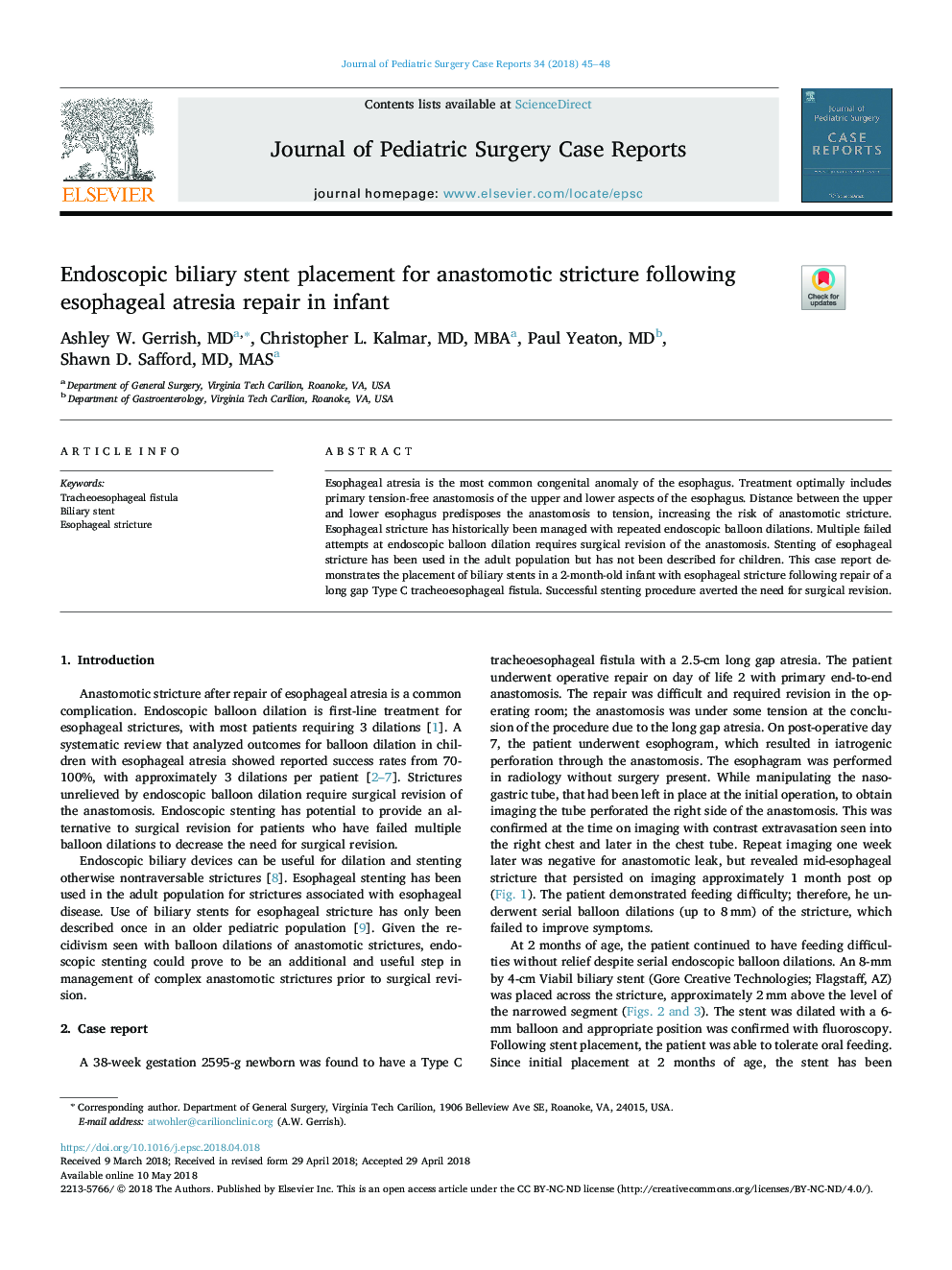| کد مقاله | کد نشریه | سال انتشار | مقاله انگلیسی | نسخه تمام متن |
|---|---|---|---|---|
| 8810864 | 1607099 | 2018 | 4 صفحه PDF | دانلود رایگان |
عنوان انگلیسی مقاله ISI
Endoscopic biliary stent placement for anastomotic stricture following esophageal atresia repair in infant
ترجمه فارسی عنوان
قرار دادن اندوسکوپیک عصب صفراوی برای استرس زدن آناستوموز پس از ترمیم آرتریت مری در نوزاد
دانلود مقاله + سفارش ترجمه
دانلود مقاله ISI انگلیسی
رایگان برای ایرانیان
کلمات کلیدی
فیستول تراکئوئوزوفاژال، استنت صفراوی، رطوبت مری
موضوعات مرتبط
علوم پزشکی و سلامت
پزشکی و دندانپزشکی
پریناتولوژی (پزشکی مادر و جنین)، طب اطفال و بهداشت کودک
چکیده انگلیسی
Esophageal atresia is the most common congenital anomaly of the esophagus. Treatment optimally includes primary tension-free anastomosis of the upper and lower aspects of the esophagus. Distance between the upper and lower esophagus predisposes the anastomosis to tension, increasing the risk of anastomotic stricture. Esophageal stricture has historically been managed with repeated endoscopic balloon dilations. Multiple failed attempts at endoscopic balloon dilation requires surgical revision of the anastomosis. Stenting of esophageal stricture has been used in the adult population but has not been described for children. This case report demonstrates the placement of biliary stents in a 2-month-old infant with esophageal stricture following repair of a long gap Type C tracheoesophageal fistula. Successful stenting procedure averted the need for surgical revision.
ناشر
Database: Elsevier - ScienceDirect (ساینس دایرکت)
Journal: Journal of Pediatric Surgery Case Reports - Volume 34, July 2018, Pages 45-48
Journal: Journal of Pediatric Surgery Case Reports - Volume 34, July 2018, Pages 45-48
نویسندگان
Ashley W. MD, Christopher L. MD, MBA, Paul MD, Shawn D. MD, MAS,
